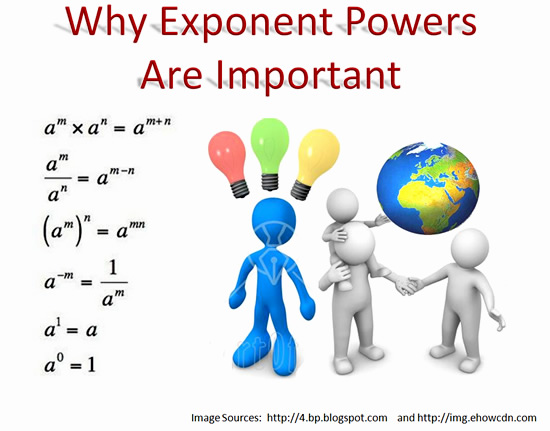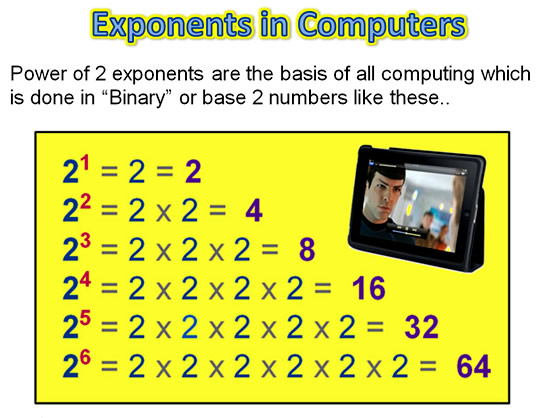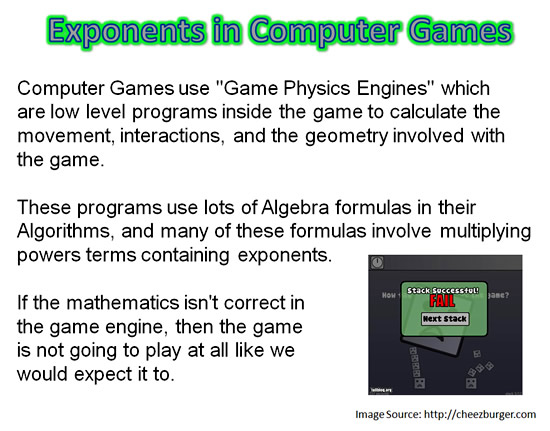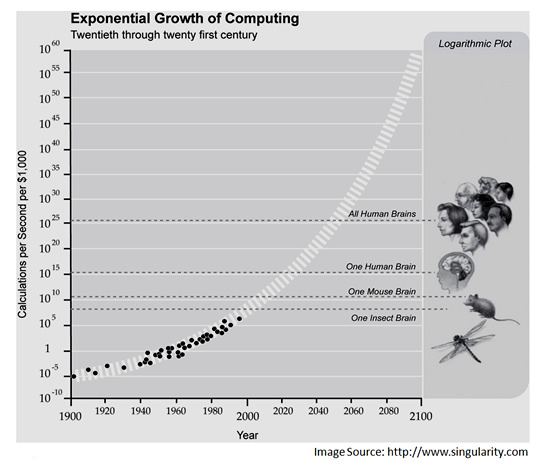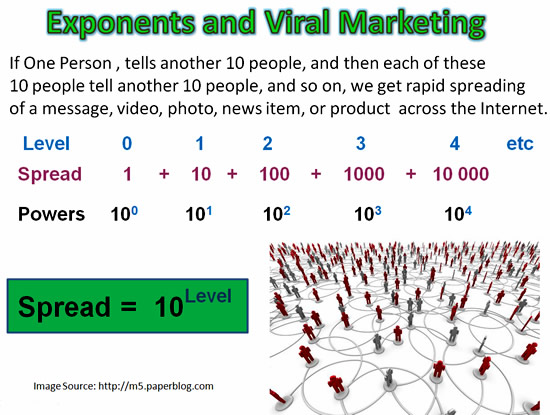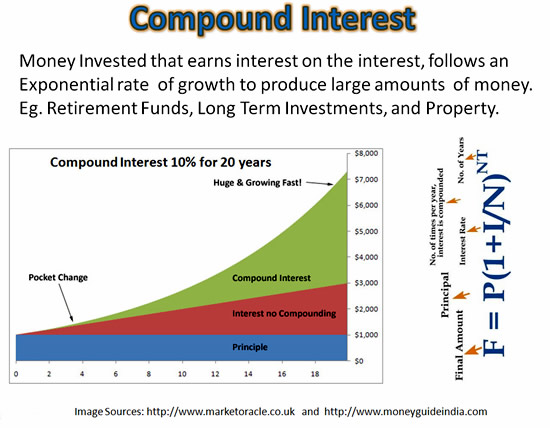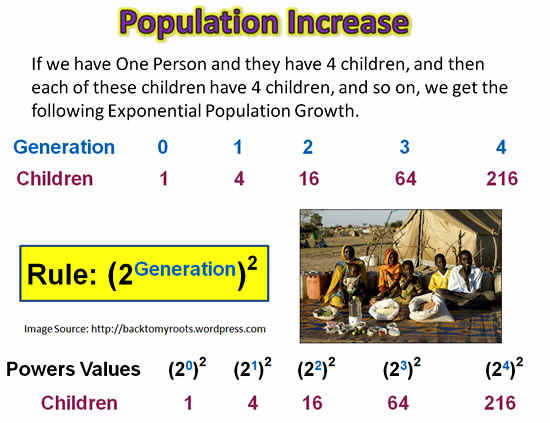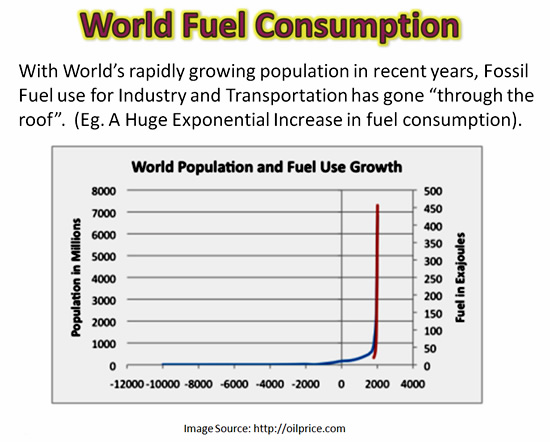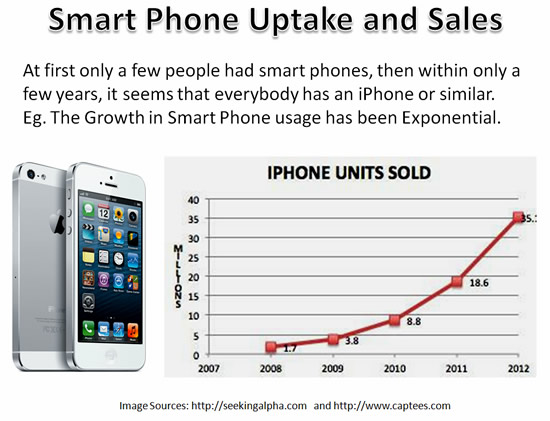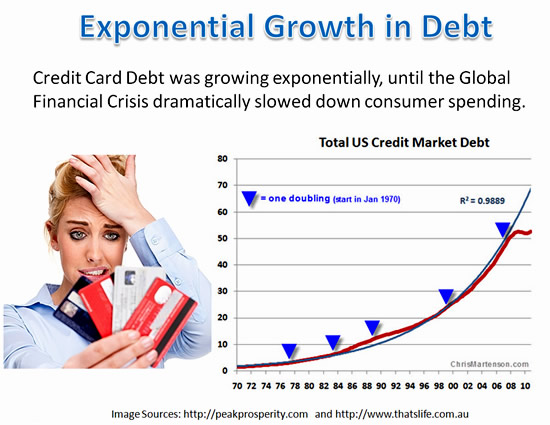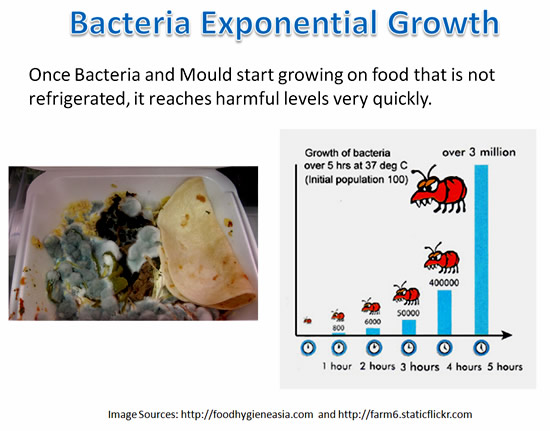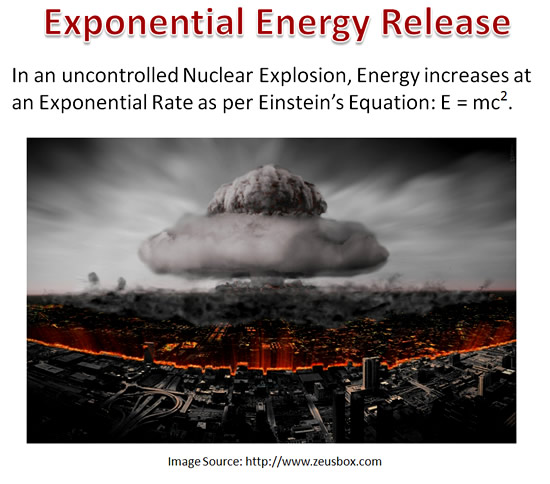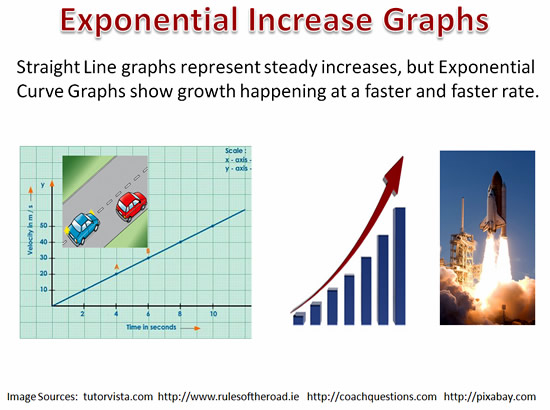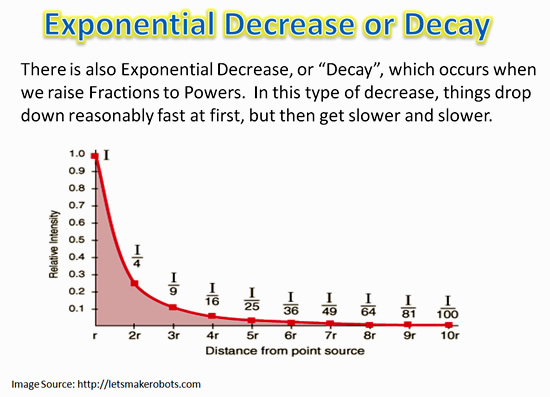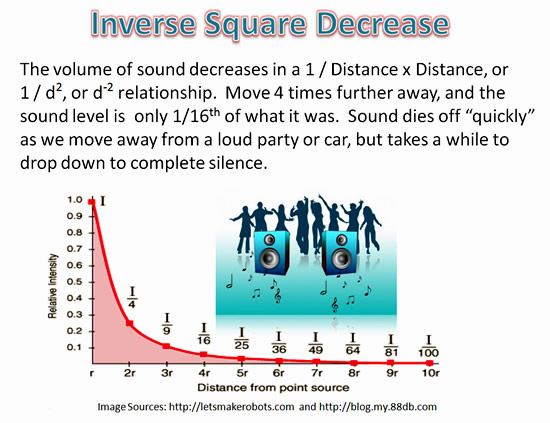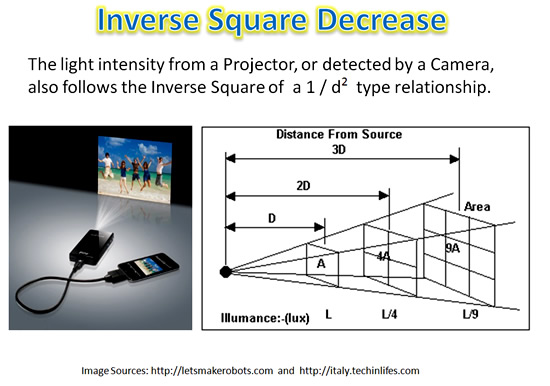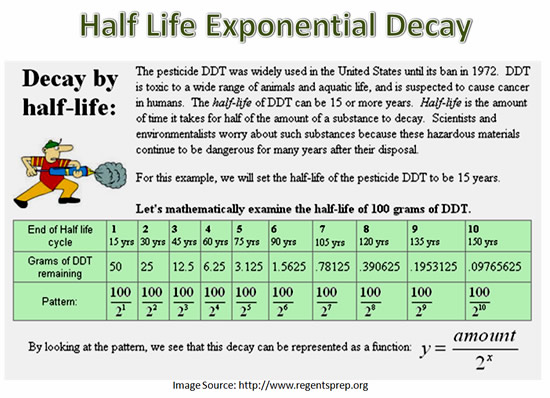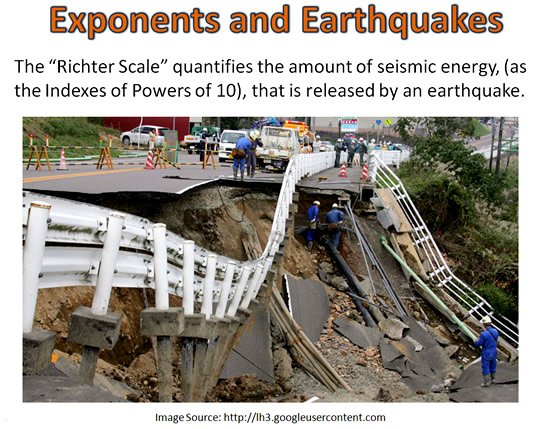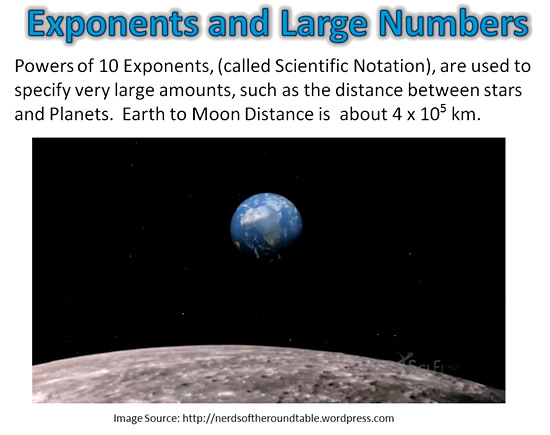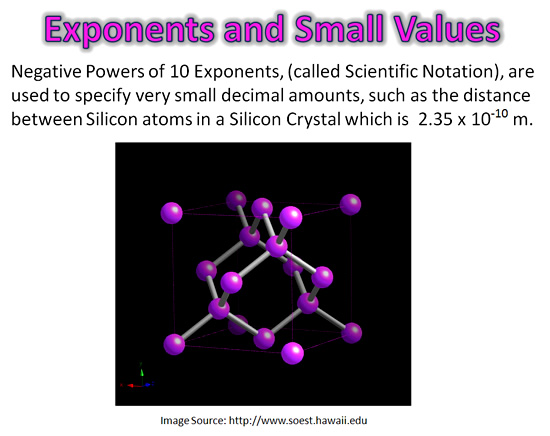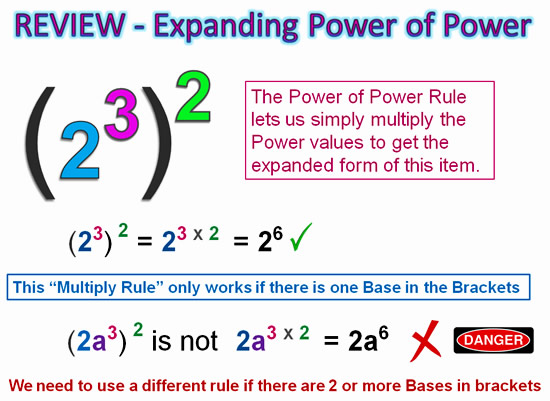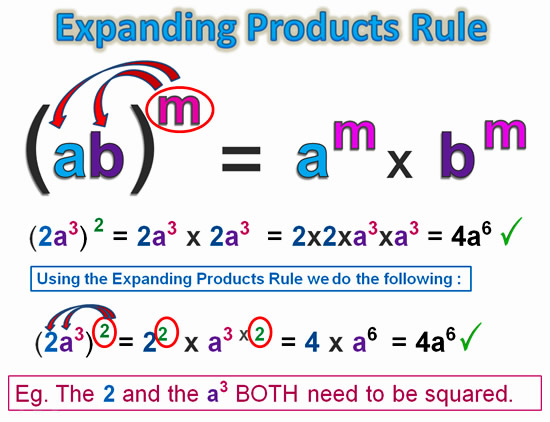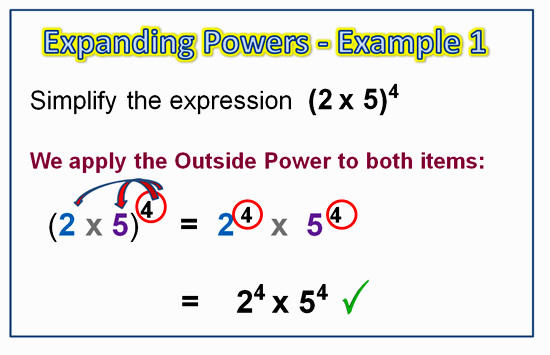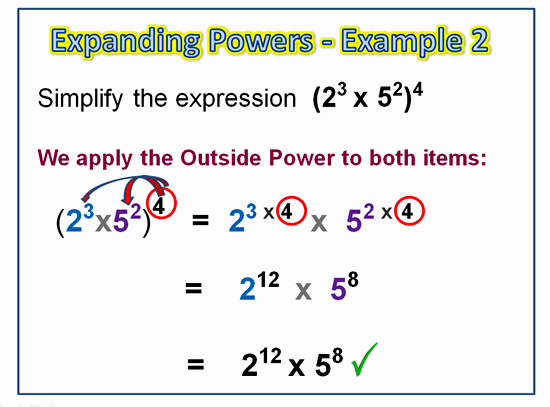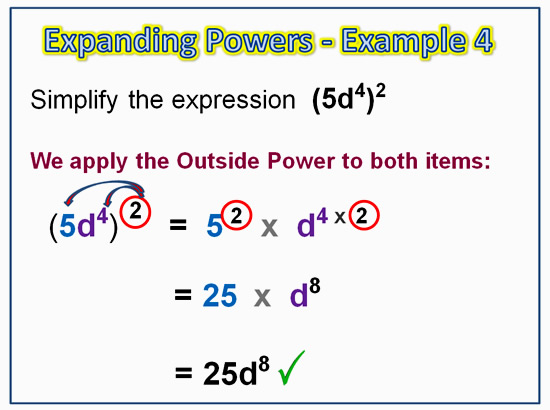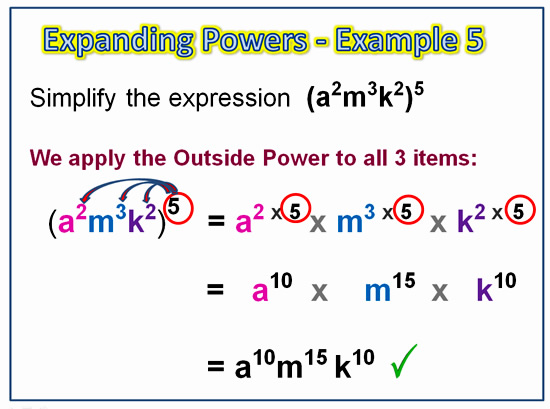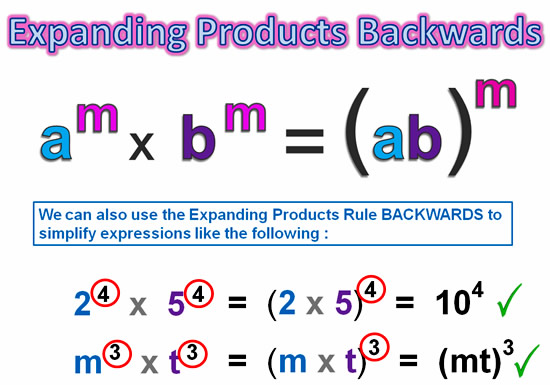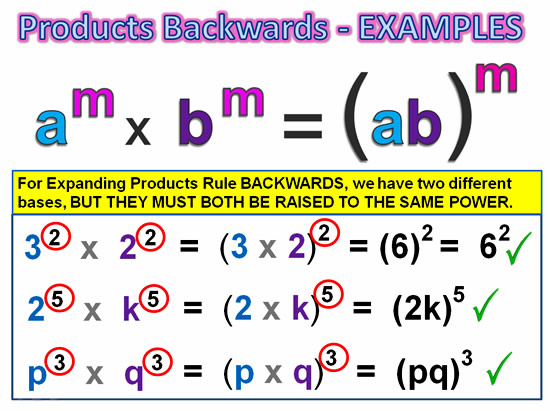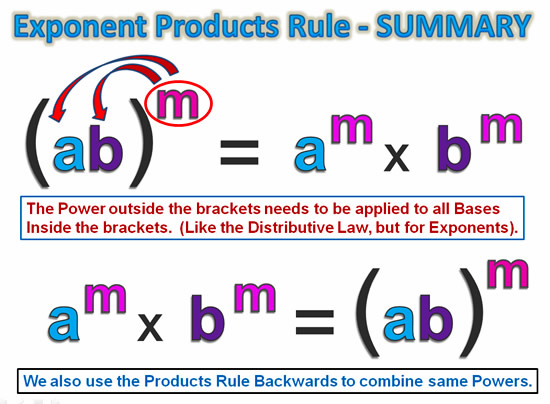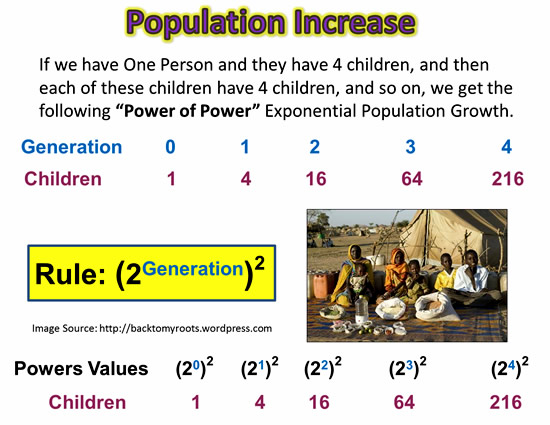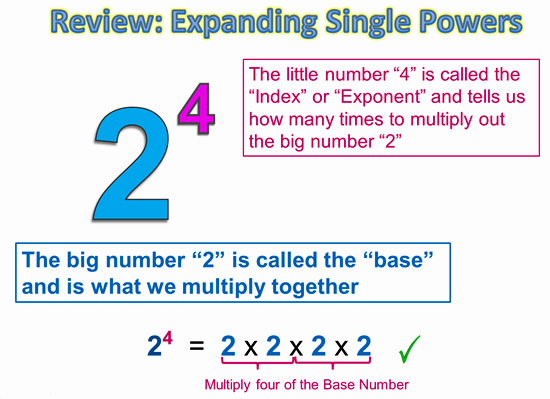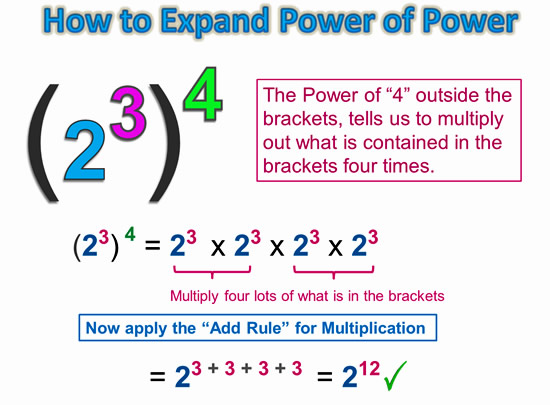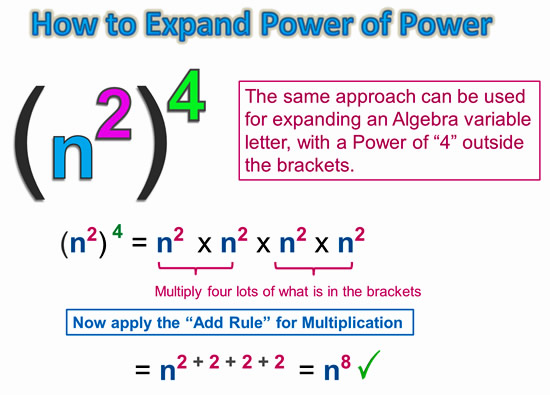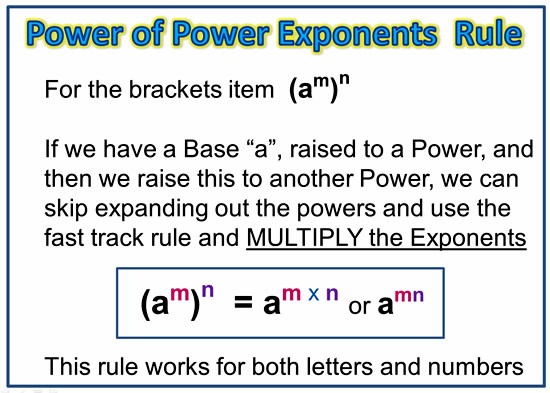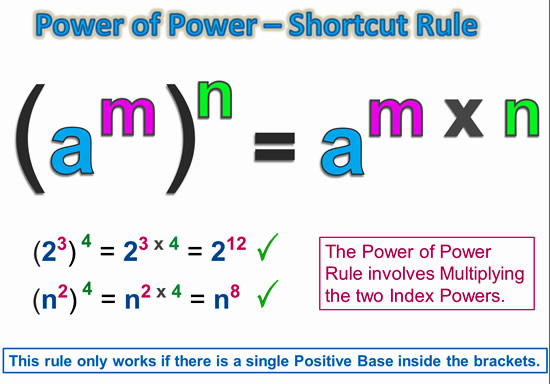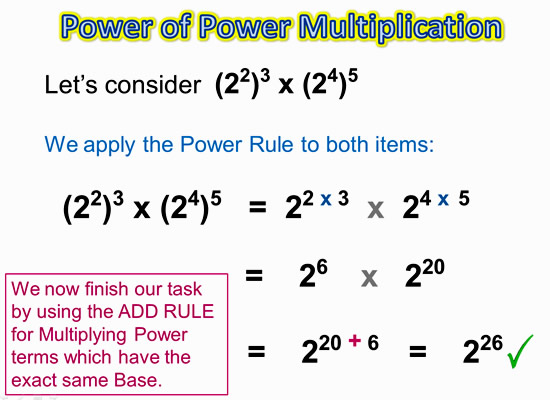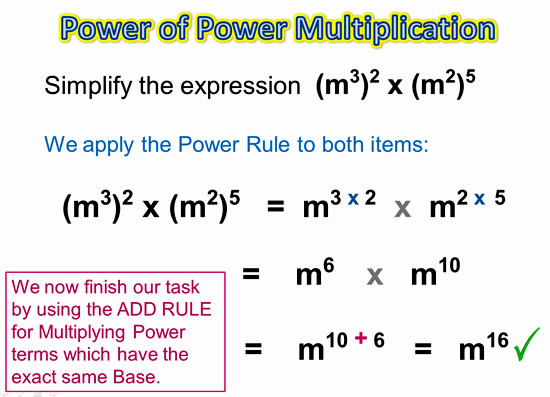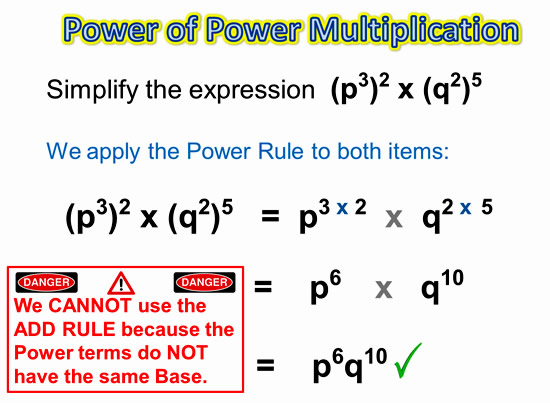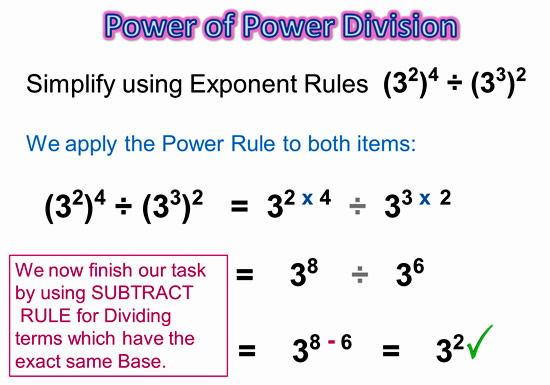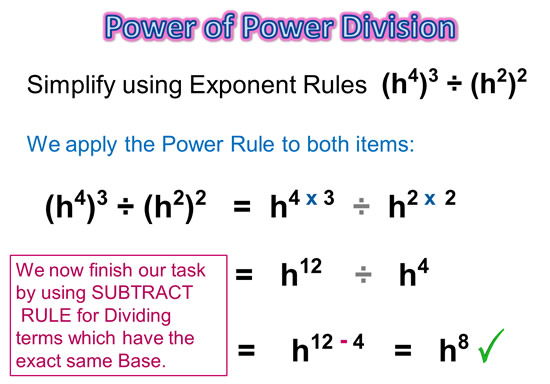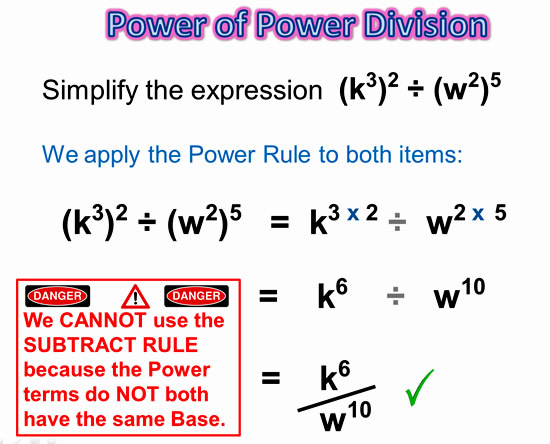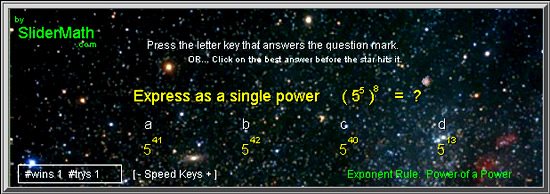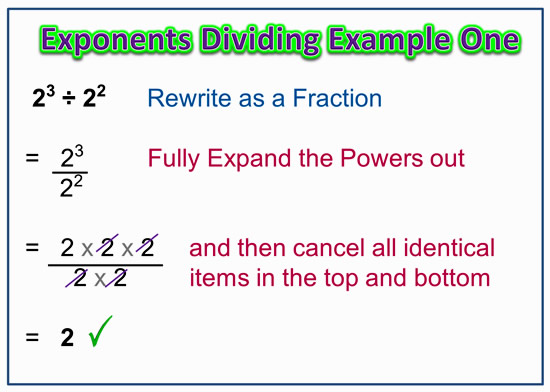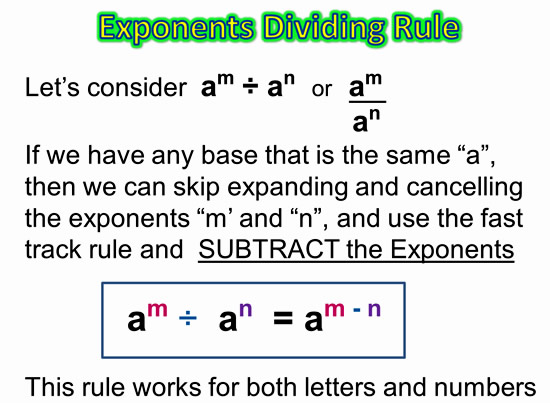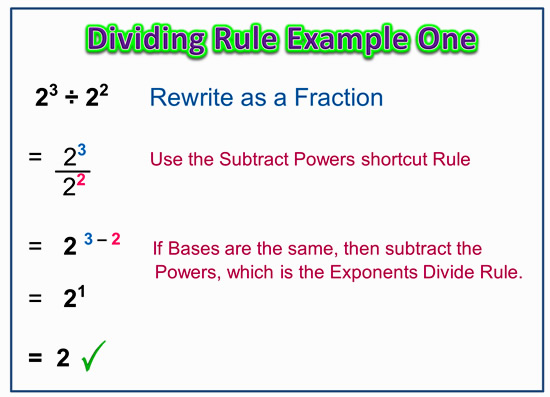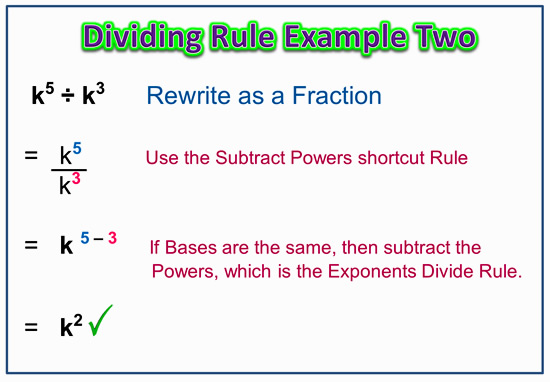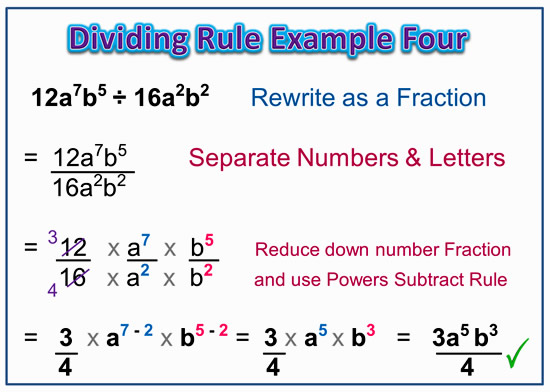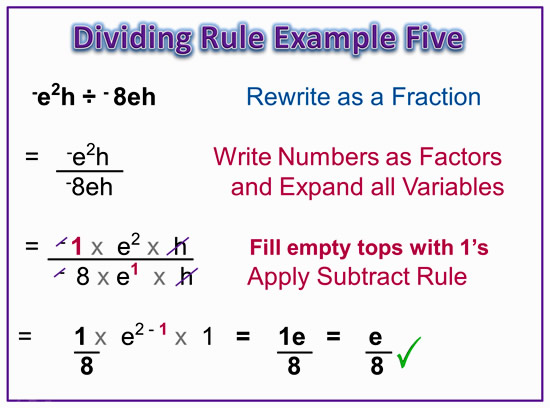
Image Source: http://www.philipvaughan.net
Philip Vaughan is an amazing American Artist who Paints and Designs sculptures for public places.
He describes his work as “hidden geometry”, and in the picture above he has expanded out metal into spheres by making many geometric fractions which he has joined together and then added specialised lighting.
This lesson on Expanding Quotients involves fractions, dividing and expanding, but in a slightly different form to Philip’s work.
The word “Quotient” means one value divided by another value.
The Quotient expression can be written as either a Fraction, or as one item divided by another using a “divided by” sign.
Review of Expanding Products Rule
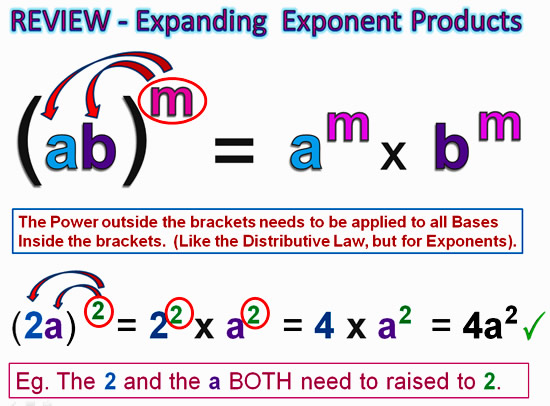
Image Copyright 2013 by Passy’s World of Mathematics
When expanding exponent products, we need to apply the power outside the brackets, onto every item inside the brackets.
The “Expanding Quotients Rule” is basically the same as the Products Rule, except that we are distributing the outside brackets power onto all items that are present in a Fraction.
Expanding Quotients – The Long Way
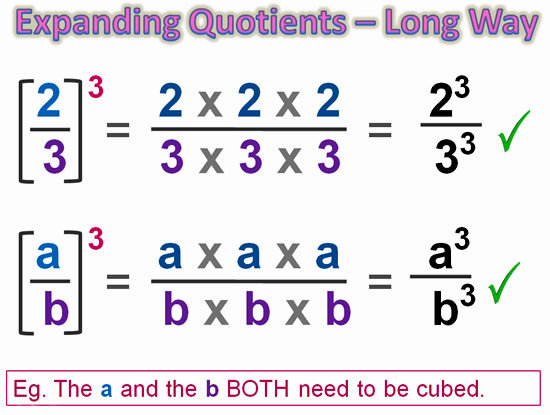
Image Copyright 2013 by Passy’s World of Mathematics
In the above examples we needed to multiply out the Top and Bottom of the given fraction three times.
We multiplied three times because we had a power of three outside the brackets.
If we look carefully we can see a pattern occurred from intitial brackets term, to the final expanded fraction without brackets.
The pattern, or shortcut, we can use is to apply the power outside the brackets, onto every item inside the brackets.
This shortcut is called the “Expanding Quotients” Rule, or the “Power of a Quotient” Rule.
Expanding Exponent Quotients Rule

Image Copyright 2013 by Passy’s World of Mathematics
Expanding Quotients Videos
The following videos explain the Expanding Quotients Rule, and show some examples of how to apply it to Bracketed Exponent Expressions.
The following excellent video from “Math Scribble” is about normal dividing of exponents; then 1 minute 42 seconds into the video covers
Power of a Quotient Rule.
The following video reviews the Products Rule, then at 1 minute 45 seconds into the video covers the Expanding Quotients Rule.
Expanding Quotients – EXAMPLES
The following examples show how to apply the Expanding Quotients Rule to both numbers and letter variables in bracketed expressions.
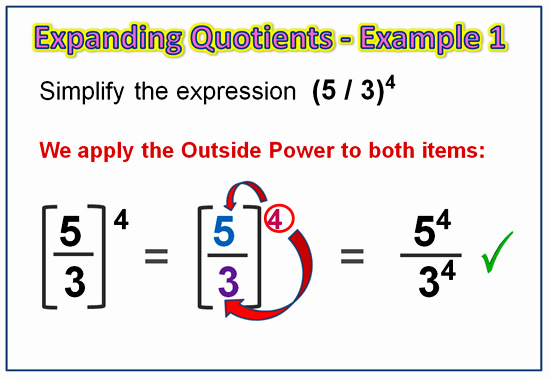
Image Copyright 2013 by Passy’s World of Mathematics
Because the expanded numbers would create a large numerical answer, we usually leave the answer in Index Form, rather than working out the actual number value.

Image Copyright 2013 by Passy’s World of Mathematics
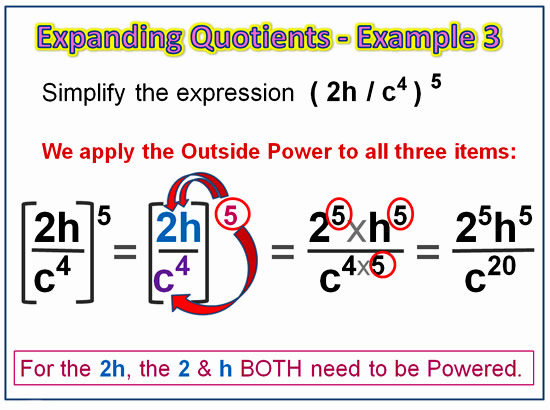
Image Copyright 2013 by Passy’s World of Mathematics
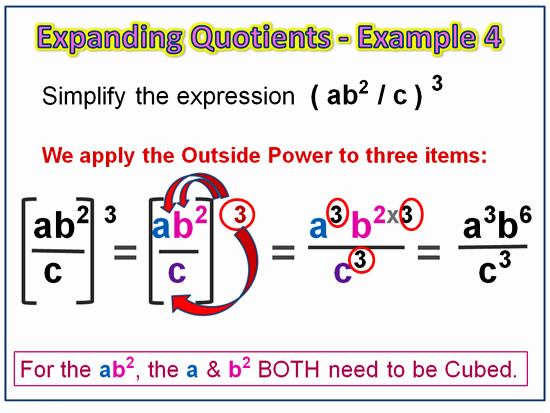
Image Copyright 2013 by Passy’s World of Mathematics
Quotient Rule Backwards for Simplifying
We can use the reverse of the Quotient Rule to combine two different bases, THAT ARE BOTH TO THE SAME POWER, into a single bracketed item.
The two different bases can be: two numbers, a number and a letter, or two letters; however it is required that both items are raised to the exact same Power.
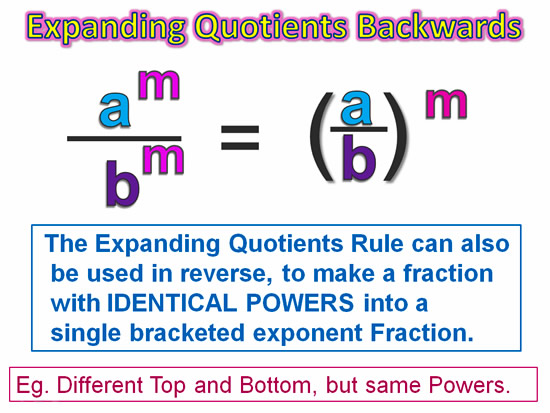
Image Copyright 2013 by Passy’s World of Mathematics
Quotient Rule Backwards – EXAMPLES
Using the Quotient Rule backwards is fairly easy, just look for a Fraction that has the Top and Bottom items both raised to the exact same power.
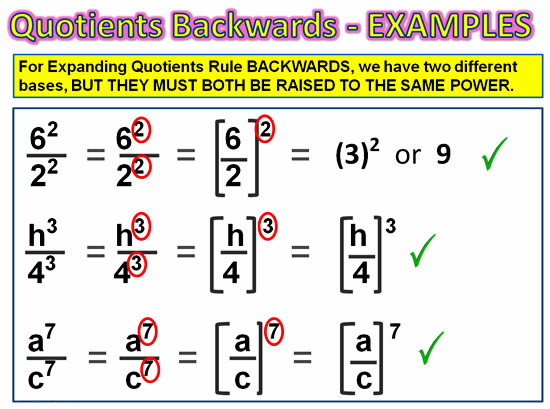
Image Copyright 2013 by Passy’s World of Mathematics
Related Items
Indices and Exponents in the Real World
Basic Indices and Exponents
Multiplying Exponents
Dividing Algebra Expressions
Dividing Exponents Using Subtraction Rule
Power of Power Exponents Rule
Expanding Exponent Products
Subscribe
If you enjoyed this lesson, why not get a free subscription to our website.
You can then receive notifications of new pages directly to your email address.
Go to the subscribe area on the right hand sidebar, fill in your email address and then click the “Subscribe” button.
To find out exactly how free subscription works, click the following link:
If you would like to submit an idea for an article, or be a guest writer on our website, then please email us at the hotmail address shown in the right hand side bar of this page.
If you are a subscriber to Passy’s World of Mathematics, and would like to receive a free PowerPoint version of this lesson, that is 100% free to you as a Subscriber, then email us at the following address:
Please state in your email that you wish to obtain the free subscriber copy of the “Expanding Exponent Quotients” Powerpoint.
Help Passy’s World Grow
Each day Passy’s World provides hundreds of people with mathematics lessons free of charge.
Help us to maintain this free service and keep it growing.
Donate any amount from $2 upwards through PayPal by clicking the PayPal image below. Thank you!
PayPal does accept Credit Cards, but you will have to supply an email address and password so that PayPal can create a PayPal account for you to process the transaction through. There will be no processing fee charged to you by this action, as PayPal deducts a fee from your donation before it reaches Passy’s World.
Enjoy,
Passy



